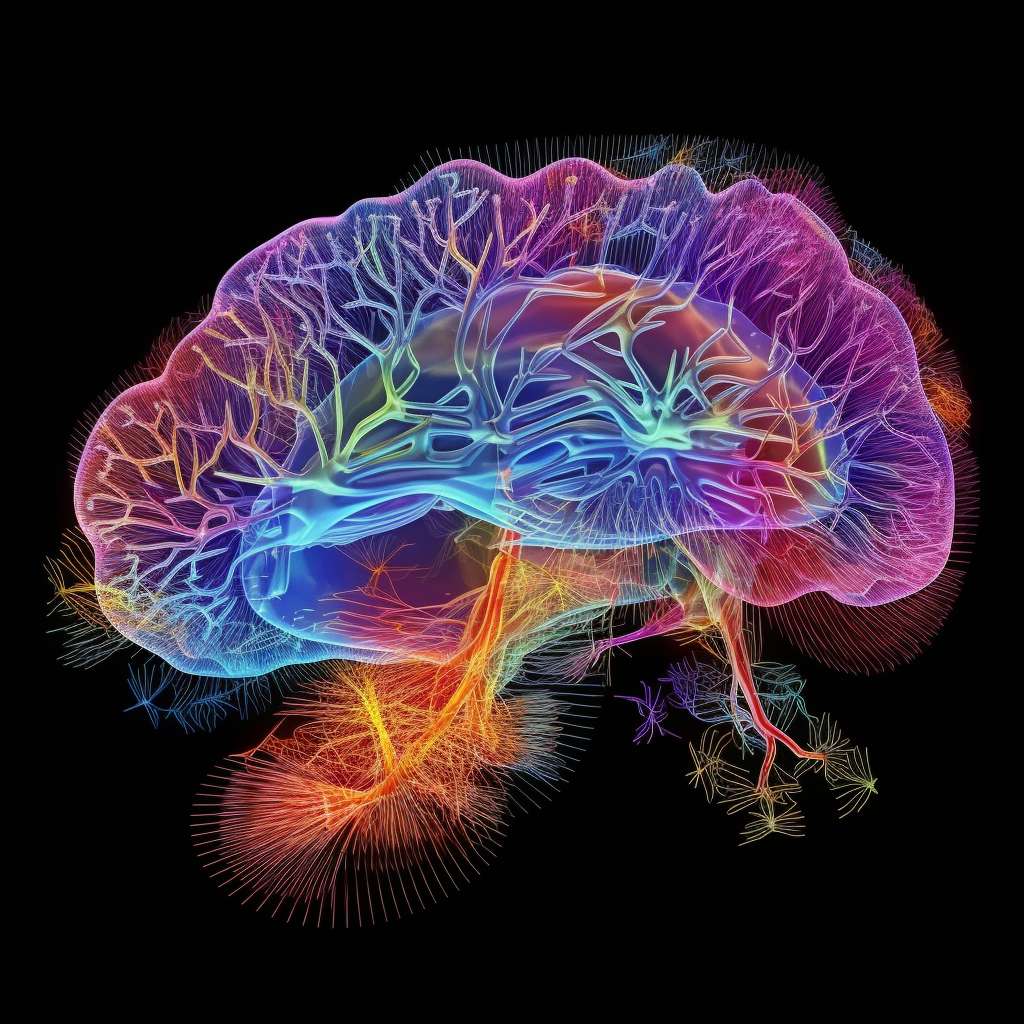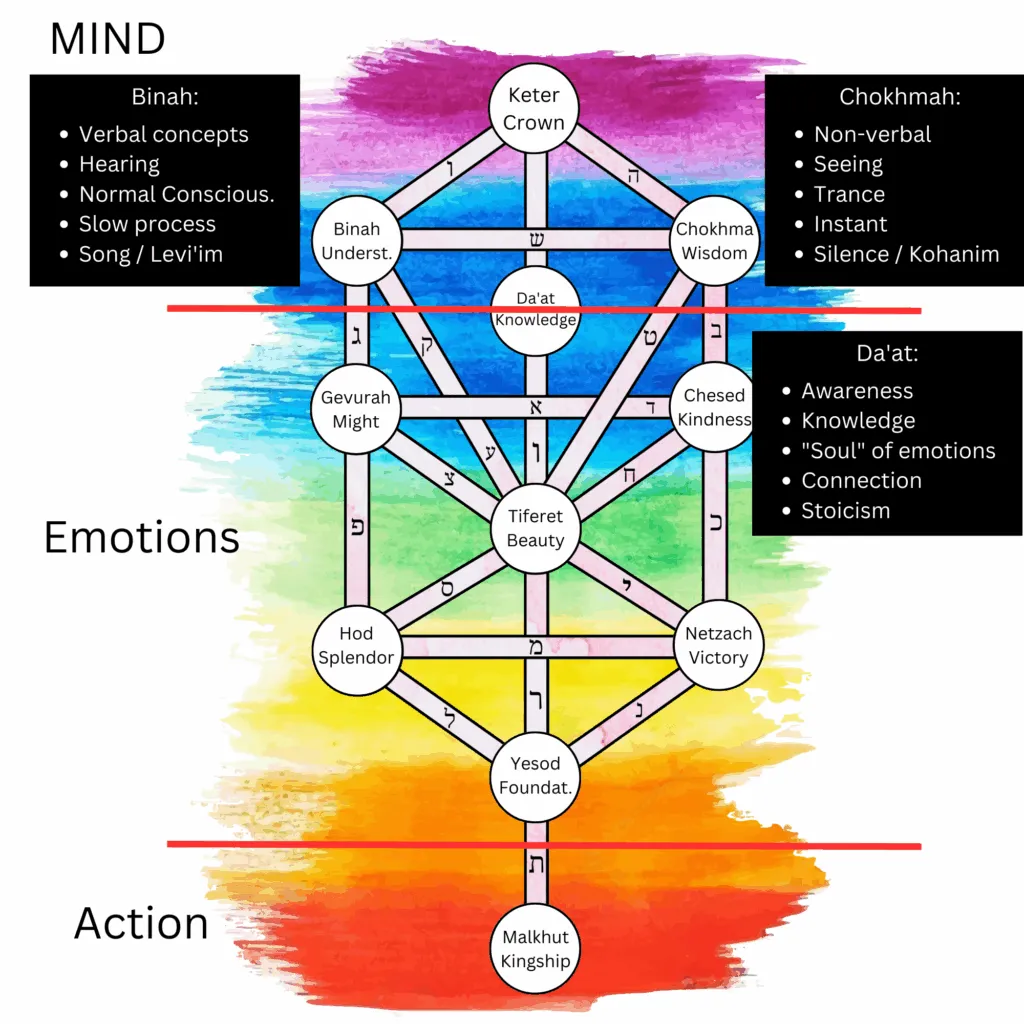In this post, I’d like to segue into a very important topic that few people pay attention to: mindset.
Sure, we all learn that mindset is everything in life and business, but how is it connected to Kabbalah? And most importantly: how does it really affect us?
In laymen terms, mindset is essentially a set of beliefs and thought patterns that our mind operates on. It’s often hardwired deep into our identity and can be very difficult to change. In secular terms, mindset is usually treated as a set of internal narratives or cognitive patterns, often shaped by upbringing, environment, and trauma.
In Kabbalistic thought, however, mindset is not merely cognitive, but ontological. It defines the energetic container through which the soul expresses itself in this world. The Arizal explains in Shaar HaGilgulim that each soul descends into this world with a specific tikkun (spiritual rectification) aligned with its root in one of the Sefirot. Each day there are new Tikkunim to be performed and everything must be fixed at the end of the life or after it (sometimes through reincarnation).
This root shapes not just the soul’s mission, but also its inner structure, how it interprets reality, what lessons it must confront, and which blind spots it will struggle to see. In other words, what modern psychology calls “mindset” is often the visible outgrowth of deep soul-rooted wiring that the person must rewire through avodah (inner work).
The Baal Shem Tov teaches that a person is where their thoughts are (Keter Shem Tov). If your thoughts are stuck in fear, resentment, or despair, you are energetically dwelling in a low spiritual realm, often feeding the forces of impurity (kelipot) instead of drawing down light.
The thing to understand is that the mind is not a passive screen, but an active transmitter and receiver.
In Kabbalistic terms, thought (da’at) functions as a bridge between the higher soul faculties and the lower expressions of behavior. This makes your mindset a type of channel, one that either invites divine presence or repels it. From this view, changing your mindset isn’t a luxury for personal development, it is an act of divine alignment.

The 5 parts of the soul
Before we delve into that, let’s remember that our soul is essentially composed of 5 parts: Nefesh (lowest), Ruach, Neshama, Chaya and Yechida (highest).
Most people end up having contact only with the Nefesh which is our base psyche, but with a little training it’s possible to occasionally access the Ruach and Neshama. (The full blown revelation of these 2 parts is something that can take a lifetime of inner work though)
While most people are familiar with the idea of the soul as a singular entity, Kabbalah reveals that the soul is layered, fluid, and dynamic. Each layer of the Nefesh, Ruach, Neshama, Chaya, and Yechida has its own consciousness, sensitivities, and needs.
- The Nefesh is responsible for biological impulses and basic emotional reactions.
- The Ruach governs ethical decision-making and emotional intelligence.
- Neshama brings access to divine intellect and inspiration.
Chaya and Yechida are rarely accessible in this world but can subtly influence through inspiration, awe, or moments of transcendence.
The inner dialogue between these parts is what determines a person’s vitality and resilience. When the Nefesh is out of alignment or overwhelmed, the higher parts may be blocked from flowing downward. This creates emotional stagnation or confusion, which many people interpret as depression, anxiety, or spiritual numbness.
The Zohar calls these exchanges the secrets of Feminine waters (Mayim Nukvin) which are aroused from below through effort, yearning, and initiative and Masculine waters (Mayim Dukhrin) which descend from above in response, delivering insight, clarity, or transformation.
When a person takes active steps to refine their emotional state, whether by cultivating gratitude, realigning perspective, or opening the heart, they send signals upward, initiating this sacred exchange.
A blocked mindset, then, is more than just negativity; it is an interruption in this divine communication flow. Kabbalah teaches that every thought or feeling has a spiritual impact, either constructing or dismantling the inner temple of the soul. To train the Nefesh to send clear, positive signals to Ruach and Neshama is to awaken the full multidimensionality of the human being.
While it might seem that the Nefesh is powerless to effect any real change because the higher levels command it to “go through what needs to be fixed”, this is not so. As it turns out, these 5 parts of the soul are constantly exchanging signals, called “Mayim Nukvin” (feminine waters) and “Mayim Dukhrin” (masculine waters).
We’ll see why this is important.
The Tree of Life and the Architecture of Consciousness
As a business coach, I’ve noticed my clients have certain speech patterns that often emerge in our talks: difficulties with their spouse, work, health issues, lack of motivation or hope, and so on. Everyone has something in life they want to change.
If you will recall the Tree of Life diagram, you will see that we there are 3 (or 4) Sephirot that comprise the intellectual faculties of the soul called Mokhin, and another 7 that comprise the emotional faculties called Middot:

In the structure of the Tree of Life, the intellectual faculties, Chokhmah, Binah, and Da’at, are not just sources of thinking, but blueprints of how consciousness emerges.
- Chokhmah is the raw flash of insight
- Binah is the expansion and analysis of that insight
- Da’at is the internalized knowledge that becomes part of the person.
Above and deeper than that is the Sephira of Keter, where one’s identity and mindset is quietly solidified over time.
Keter is the will and desire of the soul, which, according to the Arizal, reflects the very first interface between the Infinite Light (Ein Sof) and the vessel of the individual.
That means that mindset is more deeply linked to Keter than any other Sefirah. Because Keter is usually unconscious, most people never realize how much of their behavior is determined not by thought, but by unspoken identity, hidden desire, and inherited beliefs.
While some thinking patterns are part of the Binah and Da’at faculties, the values and experiences a person holds dear rests into the realm of Chokhmah.
However, Keter is the source code behind everything in life since it encompasses all other Sephirot (this is not clear in the above diagram, which is how it’s usually represented, but see Idra Rabbah and Idra Zuta).
This is why change often fails: people attempt to shift their Binah (logic) or even Da’at (conviction), but their Keter remains untouched. The real mindset work happens when a person starts questioning their deepest assumptions about reality, self-worth, success, suffering, and God.
These assumptions are encoded in Keter and reflected downward into the emotional realm (the Middot). If Keter is the “source code” of your spiritual operating system, then real transformation begins by examining and elevating what you truly want, what you’re willing to suffer for and what you unconsciously expect from life. Kabbalistically, this is a process of aligning Ratzon Elyon (higher will) with Ratzon Tachton (lower will). Without this alignment, mindset techniques remain superficial. With it, everything shifts.
And this is where these signals we mentioned before come into play. Keter might be the highest and most difficult place to access, but by changing one’s signals, one can shift our mindset and change the entire way our life plays out.
I like to call the lower 7 Sephirot we have in our souls the “anchor of reality” because, to a great extent, they really define what we experience in life.
How Mindset Affects Your Reality
One of the great mistakes in modern spiritual discourse is treating mindset as a mental gimmick: just reframe your thoughts and everything changes. Kabbalah insists that reality is far more integrated: your beliefs affect your energy, your energy affects your surroundings, and your surroundings reflect your inner state. This is not magical thinking; it’s energetic law.
The Baal Shem Tov explains that everything a person experiences externally is a mirror to their internal state. Therefore, if a person is constantly encountering resistance, conflict, or failure, there is often an energetic mismatch in their inner system that must be repaired. Changing mindset becomes not only about shifting perception, but about sending new messages through the soul’s architecture.
Moreover, the Arizal teaches that each word and thought emits a spiritual vibration that either rectifies or damages the upper worlds. The Nefesh, by its nature, is more reactive and susceptible to despair or external stimuli. But once trained, it can serve as a strong transmitter of hope, faith, and stability. In coaching work, these internal shifts often precede external breakthroughs.
A client who changes their inner dialogue from “I’m stuck” to “This challenge is part of my tikkun” immediately begins to vibrate differently. Their reality shifts accordingly, not because of mystical forces, but because they have aligned their inner instruments with divine structure. Kabbalah doesn’t just want us to change our thoughts. It wants us to sanctify our mindset until it becomes a vessel for divine light.
Rebbe Nachman himself advises in Likutey Moharan that a person should make himself joyous even with silly things and it’s not so difficult to see why: when we change the way we behave and feel, even if it feels forced, the entire system is changed.
Happiness, bitachon (trust in God), Emunah (faith), and all other noble character traits, are a powerful way of changing the signals the Nefesh communicates with the higher parts of the soul.
Because in the end everything boils down to how well our system handles the energy exchanges with our environment and how we respond to it.
Yes, it is easier said than done, but it’s never late to start.

Tools to Shift Your Mindset the Kabbalistic Way
At the core of Kabbalah is the idea that everything is energy in motion, or (light), shefa (flow), and koach (potential). Our soul is both a receiver and a broadcaster. When our energetic system is filled with tension, fear, or confusion, it scrambles the signals, leading to disconnection.
Many people spend years trying to “fix” their life circumstances without realizing that their inner radio is simply tuned to the wrong frequency. The energy exchange between soul parts, and between the soul and the divine, cannot flow properly when the mindset is saturated with negativity or rigidity. As Rebbe Nachman warns, despair blocks divine flow more than any sin. Therefore, cultivating faith, joy, and presence is not emotional indulgence, it is technical soul work.
The key lies in remembering that every part of our being is a participant in this exchange. Speech, breath, thought, posture, hydration, intention, all are conduits of signal. You don’t need to be a mystic to begin tuning them. You only need to notice your signals.
What message is your body sending? Your eyes? Your tone of voice? Kabbalah teaches that even one moment of true inner alignment sends a wave upward through the soul system, awakening new levels of consciousness. That’s why one holy thought, one act of trust, one silent breath of surrender can shift your entire trajectory. Mindset, then, isn’t just about positivity. It is about becoming an aligned vessel for your higher self to express through the lower worlds.
And this is why I’d like to leave you with a few tips to get started in the coming days:
- BREATHE: I can’t stress how important it is to have what’s called normal breathing (expanding the lower belly fully and slowly when inhaling) because you bring in more oxygen to your brain, and air (ruach) is also energy.
- SMILE: Yes, it seems forced, but your brain doesn’t know the difference between what’s real or not. You don’t need to look crazy, but everyone has what to be thankful for in life. Gratitude (Sefira of Hod) affects our energy levels. Cultivate counting your blessings.
- HYDRATE: Most people neglect it, but you’d be surprised to see how easy it is to determine whether someone drinks enough water, with a little One Brain test I do in my online sessions since water heavily affects our energy flow.
- SILENCE (your mind): Honestly, I’d wage 80%+ of all our thoughts are either useless or harmful. And yes they impact our emotions and the signal we send above. Cultivate quiet, mindful, contemplation and prayer when walking the street or waiting. Every moment is an opportunity to get closer to God. Positive mindfulness increases energy.
At first, these changes might feel a bit comfortable (especially the normal breathing), but with a little persistence, they become second nature and you will notice a sharp improvement in the way you feel and see the world.
Let me know how it goes!







